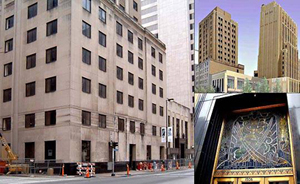Sep 13 2013
Each year, the American Society of Heating, Refrigerating and Air-Conditioning Engineers (ASHRAE) sponsors a student design competition “to encourage students to become involved in a profession that is crucial to insuring a sustainable future for our Earth – the design of energy-efficient HVAC systems.”
 Dallas Power & Light
Dallas Power & Light
For the competition, ASHRAE chooses a building for student teams to redesign that encompasses several categories of design for that building relating to the heating, cooling and ventilation system, while implementing an integrated sustainable building design. Although the platform for design is an actual building, the implementation is theoretical.
The aim of the 2013 ASHRAE Student Design Competition was to design an energy efficient sustainable building approaching the designation of a “zero energy” building with minimized energy demands for HVAC and all other technical systems that could be satisfied with locally available or building-installed renewable energy sources (RES).
This year’s team, which was mentored by Professor Raj Manglik, founder of the University of Cincinnati's student chapter of ASHRAE, consisted of Louis Albert, Chris Brubaker, Nick Pavlak, and Michael Witt – four mechanical engineering students with knowledge in architecture/construction, mechanical (HVAC) equipment, and general engineering technical knowledge.
The team was charged with the task of redesigning the Dallas Power & Light Building (DP&L), a high-rise retail and residential building located in Dallas, Texas. The primary goal was to approach a “net zero” energy building utilizing efficient sustainable building criteria, ideas and systems.
According to the ASHRAE website, the final HVAC System Selection and Design for the DP&L building were to address the following major design goals:
- Low life cycle cost
- Low environmental impact
- Comfort and health
- Creative high performance green design
- Synergy with architecture
The group’s new design produced about 67 percent of the 20-story building’s energy needs by utilizing solar as the main energy source. Solar collectors were used to preheat water for the building, meeting approximately 80 percent of the hot-water demand. According to the team’s report, “The new redesigned DP&L building provides not only comfort and customization to its occupants but a ‘net zero’ design which will be among the leading in efficient sustainable buildings.”
This is the third year in a row the UC student chapter of ASHRAE has placed in the competition. UC was awarded a “Rising Star” medal in 2011 and won first place in 2012. Professor Manglik says that for UC to consistently place in the top is no small feat. “There is no lab dedicated to ASHRAE related research here at UC,” he said. "For UC to win in this, with the limited resources and the amount of competition that they face, is a big deal.”